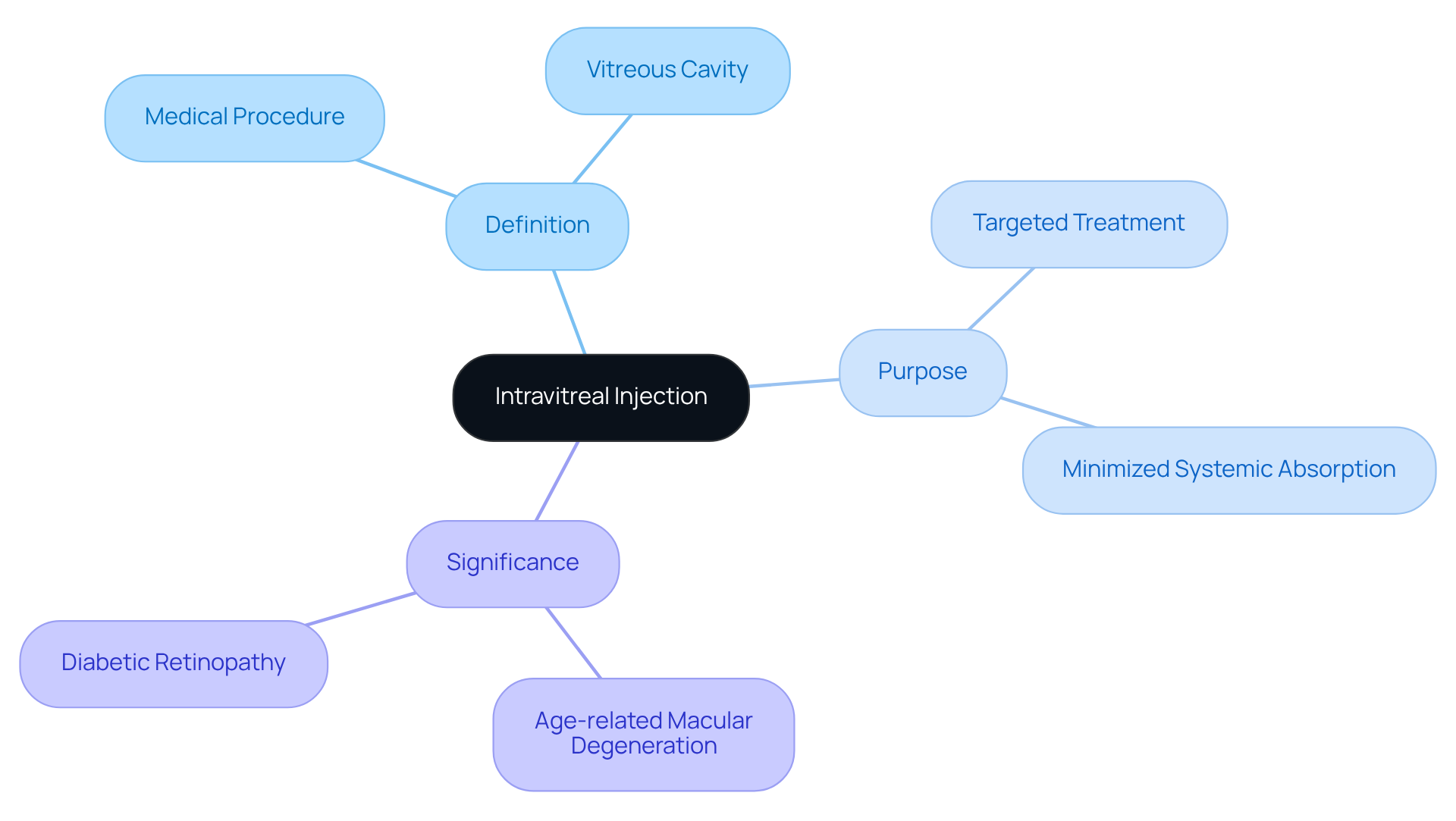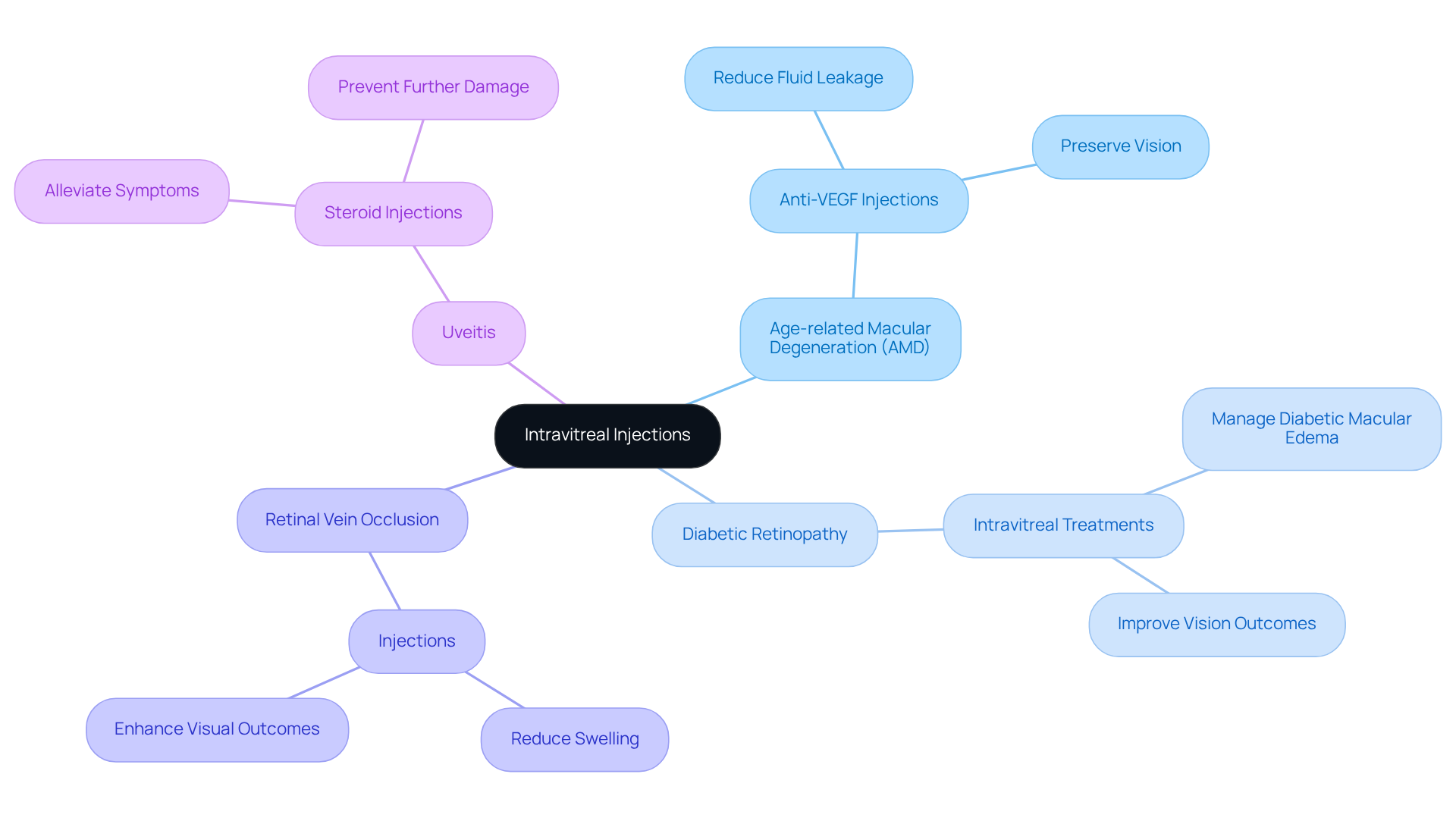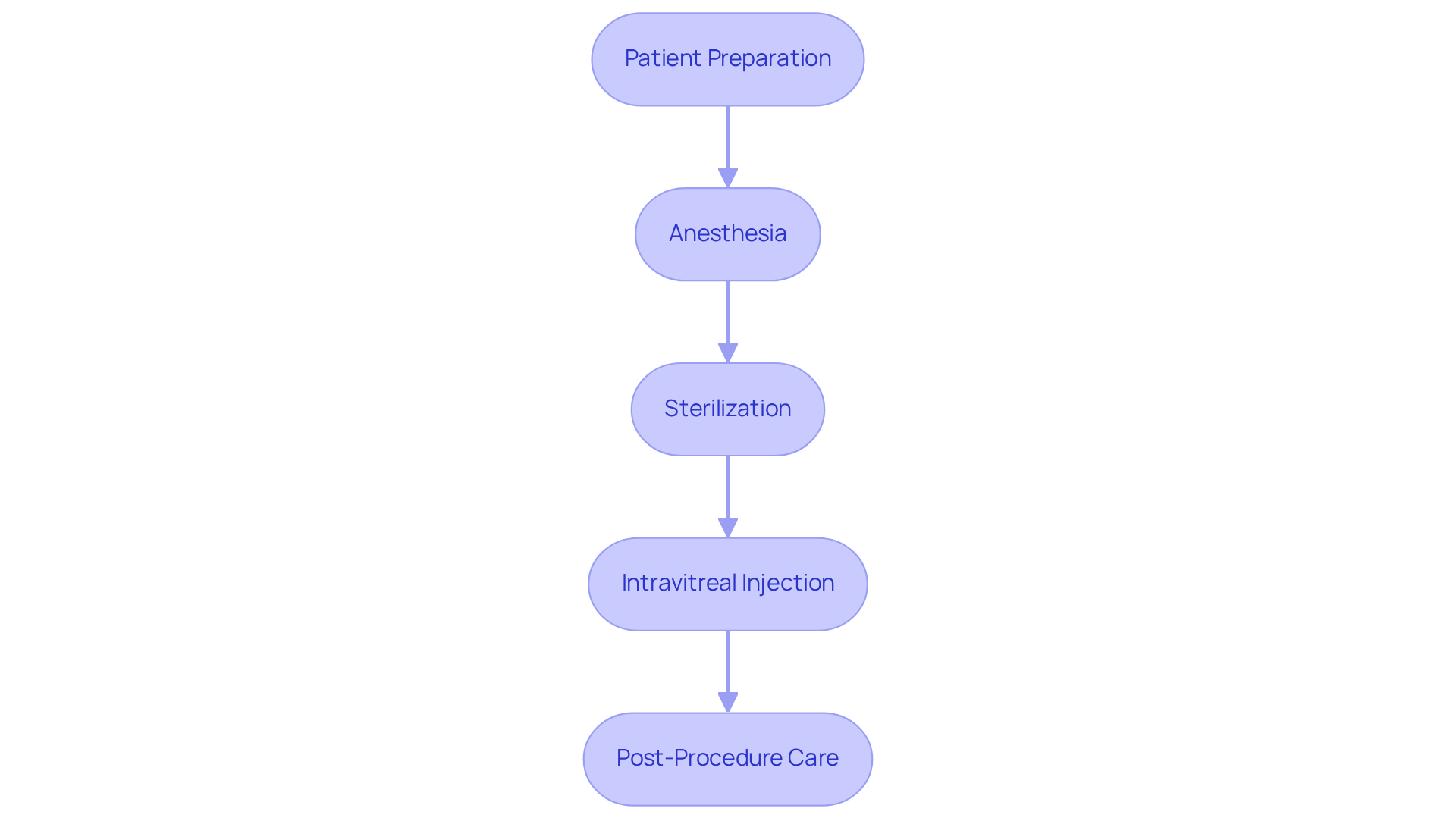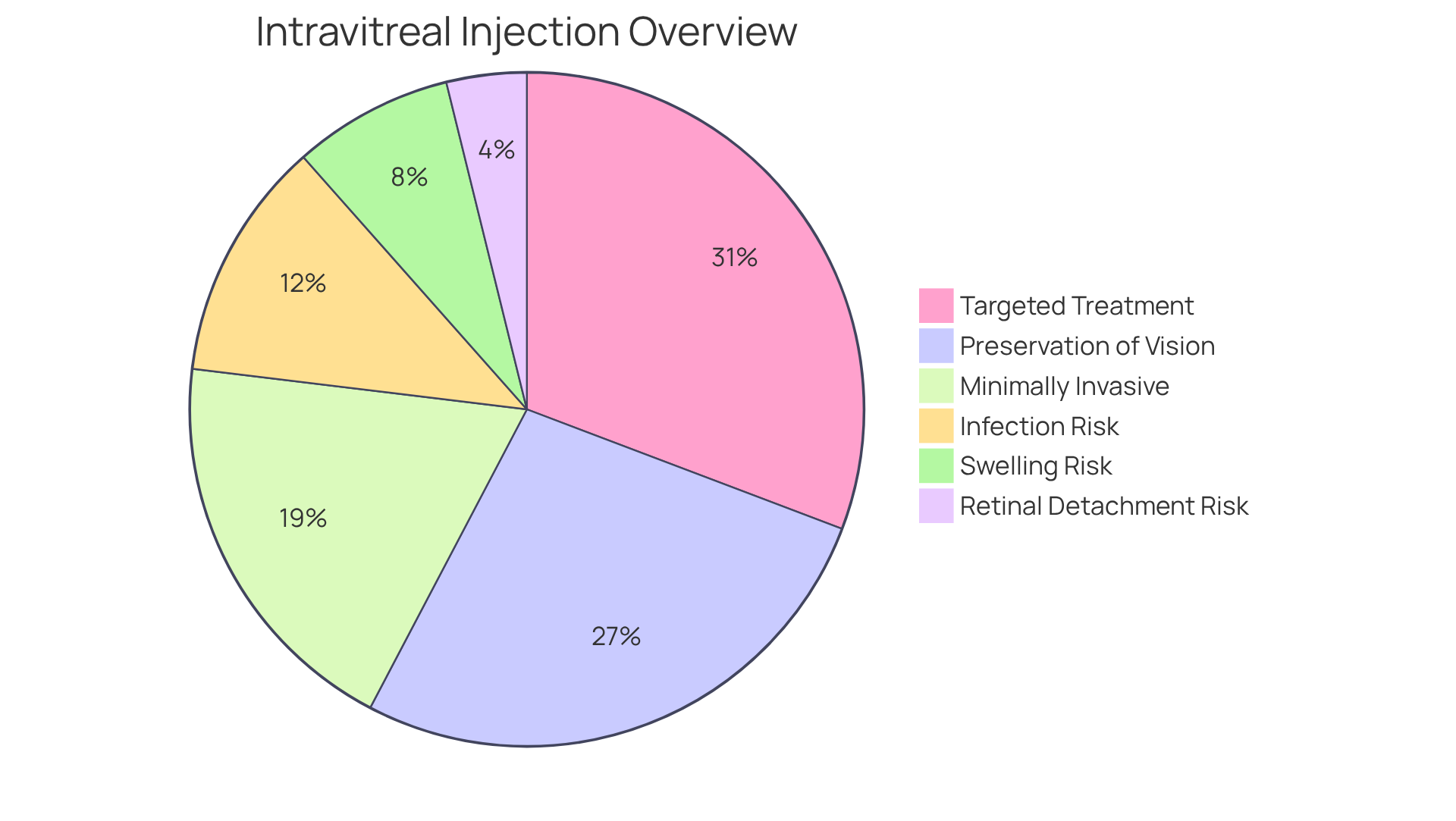Posted by: Northwest Eye in General on October 3, 2025
Overview
Intravitreal injections are an essential medical procedure, allowing medication to be delivered directly into the eye’s vitreous cavity. This approach is primarily used for treating serious retinal conditions like age-related macular degeneration and diabetic retinopathy. We understand that learning about such procedures can be daunting, but it’s important to recognize their significance in providing targeted treatment.
These injections minimize systemic side effects and play a crucial role in preserving vision. It’s common to feel concerned about the risks involved, such as infection and retinal detachment. However, knowing that these risks are managed with care can help ease your worries.
We are here to help you through this process, ensuring that you receive the best possible care. Remember, you are not alone in this journey, and support is available every step of the way.
Introduction
The intricate world of eye care often involves advanced procedures that can significantly impact vision health. We understand that the thought of receiving an injection directly into the eye can provoke anxiety and uncertainty. Among these procedures, intravitreal injections stand out as a vital treatment option for various retinal diseases. This targeted therapy can help preserve sight in patients facing serious conditions like age-related macular degeneration and diabetic retinopathy.
What are the essential details you should know about this procedure? Understanding its benefits, risks, and the steps involved can empower you to make informed decisions about your eye health and treatment options. We are here to help you through this process, providing the support and information you need to feel more comfortable and confident in your choices.
Define Intravitreal Injection: Purpose and Significance
An intravitreal injection is a medical procedure that delivers medication directly into the vitreous cavity of the eye, the gel-like substance filling the space between the lens and the retina. We understand that this may sound daunting, but this method allows for targeted treatment of various retinal diseases. It ensures that high concentrations of medication reach the affected areas while minimizing systemic absorption.
Intravitreal injection treatments are especially important, as they have transformed the management of sight-threatening issues like age-related macular degeneration (AMD) and diabetic retinopathy. These advancements offer patients effective choices to maintain their eyesight. It’s common to feel apprehensive about such procedures, but rest assured, we are here to help you through this process.

Explore Conditions Treated by Intravitreal Injections
We understand that learning about intravitreal injections, which play a crucial role in treating various retinal conditions, can be overwhelming. Here’s a closer look at some common conditions that benefit from these injections:
-
Age-related Macular Degeneration (AMD): This is a leading cause of vision loss in older adults. We want you to know that AMD can be treated with anti-VEGF (vascular endothelial growth factor) injections, which help reduce fluid leakage and preserve your vision.
-
Diabetic Retinopathy: If you’re living with diabetes, you may be concerned about sight impairment. Intravitreal treatments can assist in managing complications like diabetic macular edema, providing hope for better vision.
-
Retinal Vein Occlusion: This condition occurs when a vein in the retina becomes blocked, leading to vision loss. We want to reassure you that injections can help reduce swelling and improve your visual outcomes.
-
Uveitis: Inflammation of the uvea can be distressing. Steroid injections can alleviate symptoms and help prevent further damage, offering relief and support.
These examples illustrate the essential role of intravitreal injection treatments in managing serious eye conditions. We are here to help you through this process, ensuring that your sight is safeguarded and your concerns are addressed.

Understand the Administration Process and Patient Preparation
The administration of intravitreal injection treatments typically occurs in an outpatient setting, and we understand that this process can feel overwhelming. Here’s what to expect:
-
Patient Preparation: Before the procedure, you will usually be advised to avoid blood thinners. Eating a light meal can help prevent lightheadedness, ensuring you feel more comfortable.
-
Anesthesia: Topical anesthetic drops are applied to numb your eye, which helps to minimize any discomfort during the procedure.
-
Sterilization: The area around your eye will be cleaned with antiseptic solutions to reduce the risk of infection, as your safety is our priority.
-
The surgeon will perform an intravitreal injection using a fine needle to deliver the medication into the vitreous cavity, typically 3.5 to 4.0 mm posterior to the limbus. It’s common to feel a bit anxious about this step, but rest assured, we are here to support you.
-
Post-Procedure Care: After the injection, you will be observed briefly for any immediate responses. You may be advised to use antibiotic eye drops to prevent infection. Understanding this process can help you feel more at ease and knowledgeable about your treatment. Remember, we are here to help you through this journey.

Assess Risks and Benefits of Intravitreal Injections
Intravitreal injection offers numerous benefits that can greatly impact your vision and overall well-being.
- Targeted Treatment: By using intravitreal injection to deliver medication directly to the affected area, these injections maximize therapeutic effects while minimizing systemic side effects.
- Preservation of Vision: For many individuals facing retinal conditions, these treatments can significantly slow disease progression and help prevent vision loss.
- Minimally Invasive: Unlike surgical options, an intravitreal injection is less invasive and can often be performed in a comfortable office setting.
We understand that considering a medical procedure can be daunting, and it’s common to have concerns. However, it’s important to be aware of the potential risks associated with the procedure:
- Infection: Although rare, there is a risk of endophthalmitis, a serious eye infection.
- Swelling: Some individuals may experience swelling within the eye following the procedure.
- Retinal Detachment: In very rare cases, the procedure can lead to retinal detachment.
Overall, the advantages of intravitreal injection often outweigh the risks, particularly when considering the potential for preserving vision in patients with serious retinal conditions. We are here to help you through this process and support you every step of the way.

Conclusion
Intravitreal injections mark a significant advancement in treating various retinal diseases, offering targeted therapy that directly addresses conditions such as age-related macular degeneration, diabetic retinopathy, and retinal vein occlusion. This procedure not only enhances the efficacy of medications but also minimizes potential systemic side effects. This makes it a vital option for preserving vision in patients facing serious ocular challenges.
We understand that considering a medical procedure can be daunting. Throughout this article, we shared key insights regarding the conditions treated by intravitreal injections, the administration process, and the associated risks and benefits. The importance of patient preparation and understanding the procedure was emphasized to alleviate concerns and ensure a smoother experience. While potential risks, such as infection or swelling, are acknowledged, the benefits often far outweigh these concerns, particularly when considering the life-changing impact on vision.
Ultimately, intravitreal injections are a cornerstone of modern ophthalmology, providing hope and effective treatment options for those affected by debilitating eye diseases. As advancements in this field continue, staying informed about the latest research and developments is essential for patients and healthcare providers alike. Embracing this knowledge empowers individuals to make informed decisions about their eye health and seek the necessary treatments to safeguard their vision for the future.
Frequently Asked Questions
What is an intravitreal injection?
An intravitreal injection is a medical procedure that delivers medication directly into the vitreous cavity of the eye, which is the gel-like substance between the lens and the retina.
What is the purpose of an intravitreal injection?
The purpose of an intravitreal injection is to provide targeted treatment for various retinal diseases, ensuring that high concentrations of medication reach the affected areas while minimizing systemic absorption.
Why are intravitreal injections significant in medical treatment?
Intravitreal injections are significant because they have transformed the management of sight-threatening issues such as age-related macular degeneration (AMD) and diabetic retinopathy, offering effective treatment options to help maintain eyesight.
Is it normal to feel apprehensive about intravitreal injections?
Yes, it is common to feel apprehensive about intravitreal injections, but medical professionals are available to help guide patients through the process.






